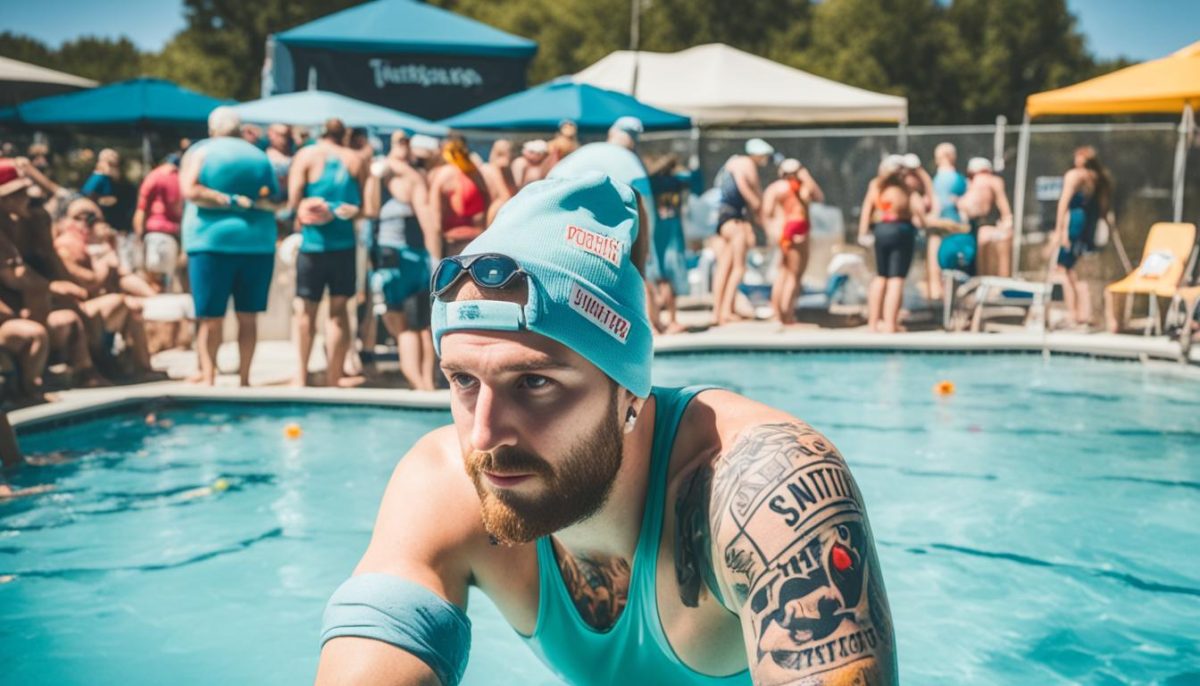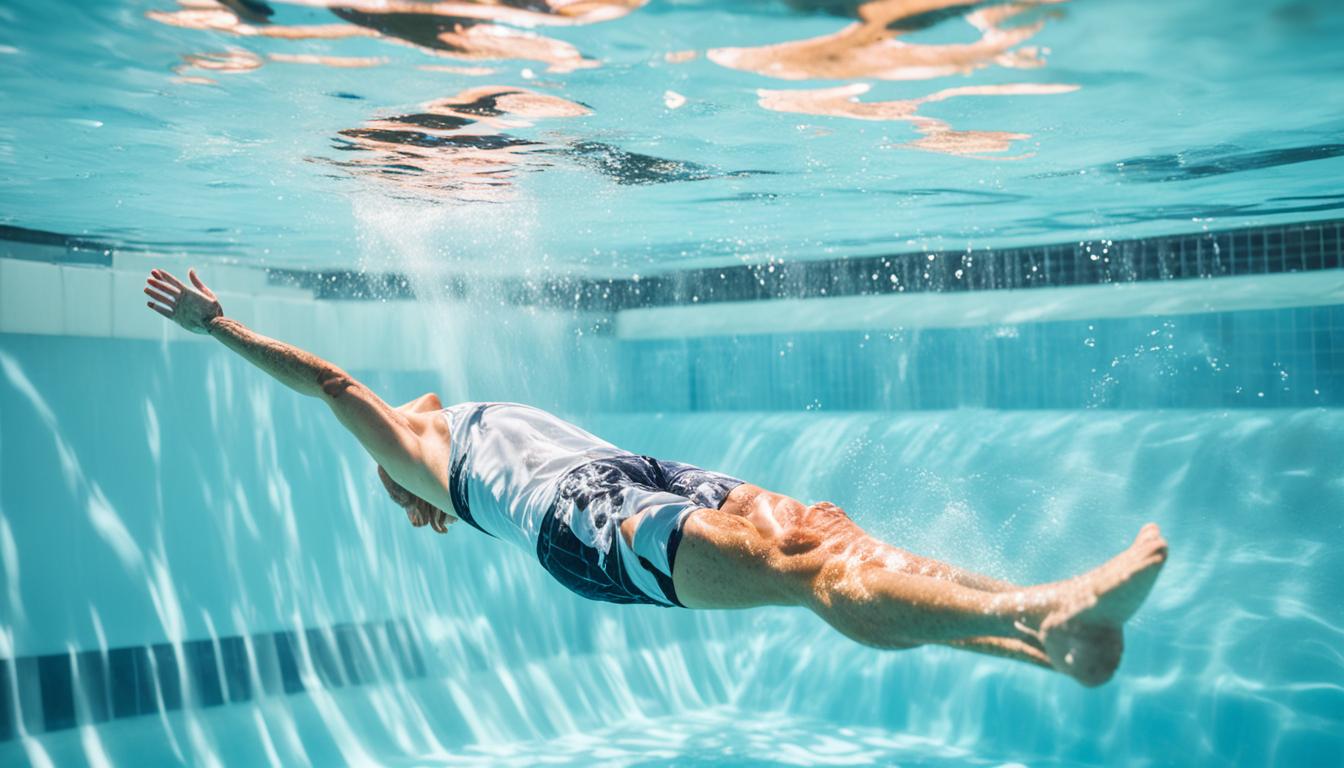If you’ve recently gotten a tattoo, you’re probably excited to show off your new ink. But before you dive into the water, it’s important to understand the safe wait time and how to protect your new tattoo while swimming. This article will provide you with all the information you need to ensure the longevity and vibrancy of your tattoo, so you can enjoy the water without any worries.
After getting a tattoo, it’s crucial to give your skin enough time to heal before exposing it to water and potentially harmful bacteria. Waiting for the right amount of time will not only reduce the risk of infections but also allow your tattoo to properly settle and retain its color.
Factors such as the size and location of your tattoo, as well as your individual healing process, can affect the safe wait time before swimming. Therefore, it’s advisable to consult with your tattoo artist or dermatologist to determine the specific timeframe for your situation.
When the time comes to take a dip, there are certain precautions you can take to protect your new ink. Using waterproof bandages or wraps can help create a barrier between your tattoo and the water, minimizing the risk of fading or damage. Additionally, applying sunscreen specifically designed for tattoos can help protect your ink from the sun’s harmful rays.
Remember, every tattoo is unique, and the healing process varies from person to person. So, while the general safe wait time before swimming after a tattoo is usually around two to three weeks, it’s essential to listen to your body and follow the advice of professionals.
By being patient and taking necessary precautions, you can confidently enjoy swimming after getting a tattoo while safeguarding your new ink for years to come.
Factors to Consider Before Swimming After a Tattoo
Before taking a dive into the pool or ocean after getting a fresh tattoo, there are several factors you should consider. The healing process, skin sensitivity, and proper tattoo aftercare are all important aspects that can affect when it is safe to swim.
The tattoo healing process plays a crucial role in determining when you can safely expose your tattoo to water. During the initial stages, your tattooed skin is essentially an open wound that requires time to heal properly. Immersing your tattoo in water too soon can increase the risk of infection and interfere with the healing process.
Another factor to consider is the skin sensitivity during the healing phase. Your skin may be more sensitive after getting a tattoo, and chlorine or saltwater can cause irritation. It is important to allow enough time for your tattoo to heal and for your skin to regain its natural barrier function before subjecting it to swimming activities.
Proper tattoo aftercare is essential to protect your new ink and promote optimal healing. Following the aftercare instructions provided by your tattoo artist will ensure that your tattoo heals properly and minimizes the risk of complications. This includes avoiding swimming until your tattoo is fully healed and any scabbing or peeling has resolved.
While it can be tempting to jump back in the water, it is crucial to prioritize the health and longevity of your tattoo. Remember, every individual and tattoo is unique, so it is essential to consult with your tattoo artist or dermatologist for personalized advice on when it is safe for you to swim after getting a tattoo.

Tips for Protecting Your New Ink While Swimming
| Tip | Description |
|---|---|
| 1. Use a waterproof bandage | If your tattoo is still healing and you want to swim, consider using a waterproof bandage to protect it from waterborne bacteria and irritation. |
| 2. Avoid direct sunlight | Direct sunlight can fade and damage your tattoo. If possible, swim in shaded areas or use protective clothing to shield your tattoo from the sun. |
| 3. Apply sunscreen specifically designed for tattoos | When your tattoo is fully healed, apply a tattoo-specific sunscreen to prevent sunburn and preserve the vibrancy of your ink. |
| 4. Rinse and moisturize after swimming | After swimming, rinse off any chlorine or saltwater and apply a gentle, fragrance-free moisturizer to keep your tattoo hydrated and promote its longevity. |
| 5. Follow aftercare instructions | Continue to follow the aftercare instructions provided by your tattoo artist to ensure proper healing, even after you start swimming. |
Safe Wait Time Before Swimming After a Tattoo
When it comes to swimming after getting a tattoo, it’s important to give your new ink enough time to heal properly. While the exact wait time may vary depending on factors such as the size and location of your tattoo, as well as individual healing rates, there are some general guidelines to follow.
Understanding the Swimming Timeline
Typically, it is recommended to wait at least two weeks before swimming after getting a tattoo. This allows your skin to heal and reduces the risk of infection or complications. During the initial healing phase, your tattooed skin is more vulnerable and prone to damage from waterborne bacteria or chemicals found in swimming pools, lakes, or oceans.
It’s important to note that waiting two weeks is a guideline and not an absolute rule. Some tattoos may heal faster than others, while others may require a longer healing period. The best approach is to consult with your tattoo artist or dermatologist for personalized advice based on the specifics of your tattoo and skin type.
Consultation is Key
Before jumping back into the water, it’s crucial to have a conversation with your tattoo artist or dermatologist. They can assess the progress of your healing tattoo and provide you with specific instructions based on their expertise. They may recommend additional wait time or precautions if necessary.
During your consultation, ask your tattoo artist or dermatologist about any specific concerns you may have, such as the type of swimming activity you plan to engage in, the condition of your tattoo, and any potential risks associated with swimming in different bodies of water.
Remember, your tattoo artist or dermatologist is there to guide and support you throughout the healing process, so don’t hesitate to reach out and seek their professional advice.
| Factors to Consider | Recommended Wait Time |
|---|---|
| Tattoo Size and Complexity | 2-4 weeks |
| Tattoo Location | 2-4 weeks |
| Individual Healing Capacity | 2-4 weeks |
Remember that these are general recommendations, and individual circumstances may vary. It’s essential to prioritize the healing and protection of your tattoo to ensure its long-term quality and vibrancy.
In the next section, we will provide you with valuable tips on how to protect your new ink while swimming, so stay tuned!
Tips for Protecting Your New Ink While Swimming
When it comes to enjoying a swim with your fresh tattoo, taking proper precautions is essential. Here are a few tips to help you protect your new ink while swimming.
First and foremost, consider using a waterproof bandage. These specialized bandages create a barrier between your tattoo and the water, preventing any potential damage or fading. Make sure to follow the instructions carefully to ensure a secure and effective seal.
Avoiding direct sunlight on your tattooed area is also vital for its protection. The harsh UV rays can cause fading and damage to your tattoo. If your tattoo is exposed to the sun while swimming, consider applying a sunscreen specifically designed for tattoos. Look for a broad-spectrum sunscreen with a high SPF, and remember to reapply regularly, especially after swimming or towel drying.
Remember, while swimming can be an enjoyable activity, it’s crucial to prioritize the well-being of your new ink. By following these tips, you can confidently embrace the water and ensure the longevity and vibrancy of your tattoo.

